- Share full article
Advertisement
Supported by

WEEKEND PACKAGES: MINI TO MAXI
By Paul Grimes
- Jan. 24, 1982
A long weekend is all you need to enjoy much of the Caribbean this year. You might prefer, of course, to stay longer, but an increasing number of three-night packages are available for busy Northeasterners who simply cannot put together more winter vacation time.
Some good examples are the packages being offered this year in Jamaica - its new government is making a particular effort to woo tourists - and in Freeport, Bahamas, which, although technically in the Atlantic and not the Caribbean, is only a 2 1/2-hour flight from New York and offers gambling as a diversion. Such packages have special appeal for physicians, lawyers and otherpr ofessionals who are reluctant to leave the office for long but can oc casionally get away, say, from Thursday through Sunday. Many of ferings are not nearly as expensive as might be expected. The '' wholesalers'' that offer them - usually through travel agents - re serve hotel space in bulk, so they can offer lower rates than you co uld obtain by yourself. Also, when you buy a package, you usually qu alify for a reduced round-trip air fare that is available only whenli nked to lodgings.
Until this winter many airlines required that you stay away at least seven nights to qualify for such fares. Now, however, the minimum stay for most of the very popular Caribbean destinations is commonly three days (which need not necessarily embrace a weekend). Meanwhile, about half a dozen major wholesalers are offering fourday, three-night packages that use chartered flights and include the cheaper charter air fare in the price.
Many prominent Caribbean hotels have spread the word that they are virtually sold out until high season ends in April. This may be true if you try to book a room yourself, but there may still be room in the blocks committed to wholesalers and charter operators -except possibly for the Presidents' birthday weekend of Feb. 12 to 15. Sometimes your agent can even get you a place in the sun when you discover, just a day or two before departure, that the weekend coming up is one that you can stretch out a bit.
Put aside, however, the thought of a long weekend at some remote, exotic, very chic and very private hideaway. Even if you can get a reservation, it will often take at least a long day of flying, taxi riding and sailing to get there, and another day to get back. For an extended weekend, it simply is not worth it. When you examine the package brochures, however, you will discover that you do not have to forgo luxury. True, the minimum rate - the price advertised in the boldest print -probably applies to something relatively spartan and not on the beach, but it is usually possible to pay more and get more, all the way up to the top of the line.
Read the brochures carefully. They will tell you, for example, whether the land price includes transportation between airport and hotel - it probably will. They will tell you if it includes taxes and tips - it probably will not. They will tell you what meals, if any, are included, and how much an optional meal plan costs, if one is available. They will tell you whether the package includes sightseeing and the use of tennis courts, a golf course and equipment for water sports. They will also describe the many frills that are offered, such as a ''rum-tasting party,'' but most of them are inconsequential.
In selecting a package, pay special heed to travel time. Antigua, for example, is only four jet hours from New York, but based on the most ideal airline schedule, it will consume at least your morning and early afternoon to get there and an evening to get back. San Juan is only about half an hour closer, but there are late-night flights that allow you to linger there longer.
Since your entire extended weekend will be prepaid, ask about penalties and insurance should you cancel any arrangements or cut your trip short. Charter packages usually require you to return home on a specified flight or pay a penalty; other packages, however, usually penalize you for returning home early but not for extending your vacation, which often can be arranged on the spot by paying a stipulated room rate for each extra day.
A good illustration of three-night vacations using scheduled airlines is contained in the ''Island Adventures'' brochure of the Liberty Travel chain. The offerings, which include the Bahamas, are identical to those wholesaled through other retail travel agencies by Gogo Tours, with which Liberty is affiliated. Other offerings, s imilar in qu ality and price, are packaged by Caribbean Holidays, Flyfaire Inc. and other wholesalers. Some other operators of threenight-an d-longer charter packages to the Caribbean and Bahamas from the Nort heast (your travel agent can help you sort them out) areA.O.T. Tours, Carefree/ David, Cavalcade, GWV Travel, Tour-Dann International , Tour Trec International and Travel Impressions.
According to Steven R. Heydt, Liberty's vice president for sales and marketing, most room rates in the current brochure are firm through late April. He said that at some hotels, however, minimumrate accommodations might be unavailable for some weekends. Air fares are not quoted in the brochure because of their changeability but were obtained for this article from Mr. Heydt and the appropriate airlines.
Some samples of what a potential extended weekend vacationer might find are: Aruba - A minimum noncharter package at this Dutch island, four hours from New York, includes three nights in a ''standard'' (bottomof-the-line) room with private bath at the informal Tamarijn or Divi-Divi Hotel for $135 a person, double occupancy, without meals, and $219 including breakfasts and dinners. Each extra day is $45 without meals and $73 with them. For single occupancy, add $41 for every night plus $41 a day for breakfast and dinner if you want them included. Reduced rates are available fo r three adults sharing aroom and children under 12 who share with par ents.
An upgrade, however, could put you in a junior suite with ocean view and terrace at the 500-room Concorde, the island's newest and largest hotel, which has the largest gambling casino in the Caribbean. The suite goes for $270 a person for three nights, double occupany, without meals and $366 with breakfast and dinner. Check with your travel agent about single rates and extra nights.
Add to these rates the round-trip air fare, which at this writing ranged from $378 to $428 at package-related rates, depending on when you go. Thus, a complete extended weekend would cost from $597 a person, including breakfast and lunch but excluding tips, taxes, liquor, any gambling losses and incidentals.
You could buy a charter package, however, for up to $220 or so less, the amount depending on the date, the operator and the frills. Carefree/David, for example, will fly you to Aruba from New York from Thursday until Sunday by Arrow Airlines, a charter carrier; put you up at the minimum-rate Talk of the Town Hotel, including three breakfasts and three dinners; pay for your transfers and some of your tips and taxes, and even give you $35 in casino chips, all for $419 in February, $379 the first weekend in March and $359 from then until the season ends in April. Hotel upgrades are possible, based on a sliding scale of rates.
Barbados - Noncharter packages begin at $69 a person, double occupancy, for three nights in an apartment with cooking facilities but no meal plan, and about $160 in quarters with breakfasts and dinners. The best three-nighters cost about $237 a person without meals plus $28 a day for breakfasts and dinners. Air transportation runs about $350 for the round trip. At this writing, there were no three-night charters.
Antigua - Noncharter packages begin at $100 for three nights without meals plus $24 a day for an optional breakfast-dinner plan (you do not have to buy it for your entire stay). No short-term charters.
Puerto Rico - There are no charters because fares on scheduled flights are so competitive. Three-night packages run from about $56 a person at the Tanama Hotel (no meal plan) to $246 in deluxe accommodations at the Caribe Hilton International in San Juan (plus $36 a day for breakfast and dinner) and $413 for top lodging at the golf, tennis and water-oriented Dorado Beach resort, including meals. Air fares begin at $175 for the round trip, but you may have to pay about $25 more because the cheapest seats are limited.
St. Croix and St. Thomas - Rates are similar to Puerto Rico's, though not as cheap at the low end nor as expensive at the top. You can fly directly from New York, for about $300, but wholesalers suggest that you take advantage of bargain fares to San Juan and change planes there, for a total round-trip cost of about $215. Tour Trec International has three-night charter packages from $479.
St. Martin - Three-night rates run from $95 a person at the Tradewinds Beach to $519 for oceanfront accommodations at La Samanna, one of the top resorts in the Caribbean. Neither package offers an optional meal plan, although intermediate ones do, so figure on some substantial extras. Round-trip air fare is $378. No short-term charters.
Dominican Republic - Three-nighters cost from $80 without meals, and $137 with breakfasts and dinners, at El Embajador in Santo Domingo and range up to $294, without meals, at the luxurious, 7,000-acre Casa de Campo, which has two 18-hole golf courses and lots of tennis. Weekend round-trip air fares begin at $390. No three-night charters. Jamaica - T he focal points are Ocho Rios, Montego Bay and Negril. Noncharter pa ckages run from $79 without meals or $162 with breakfasts an d dinners at the casual Seawind Beach Resort at Montego to $328, incl uding three meals daily, at the Jamaica Inn at Ocho Rios. The rou nd-trip air fare is about $300. Three-night charter packages are available to Montego Bay, with prices that begin at $359, includi ng air fare.
Freeport, Bahamas - Noncharter packages are available from $79 without meals, plus $130 for round-trip air fare from New York (compared with a fare of $358 for the general public). Most visitors from the Northeast go by charter, however, and Freeport, with the strong combined attraction of sun, gambling and international shopping, has become a favorite three-night charter destination. Charter packages, including both fare and accommodations, begin at $199 a person (add about $40 in February and $20 in March). Optional meal plans are available. Freeport, incidentally, is only two and a half hours from New York.

Innocenti Mini Traveller
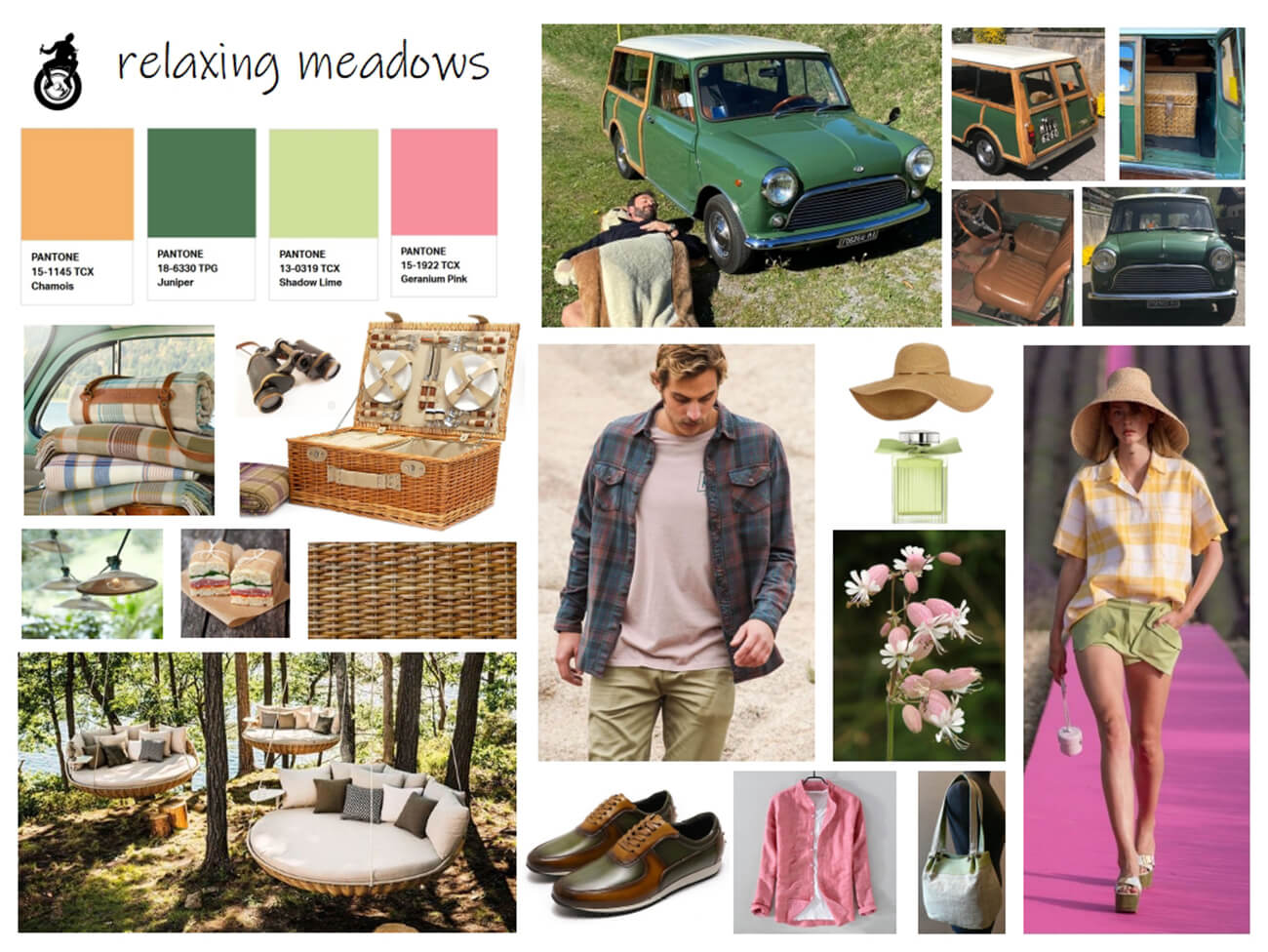
Cute Versatility
Not even Alec Issigonis, the original designer of the MINI, could have imagined such runaway success! Demand for all the possible MINI variants was so high that the Station Wagon version (The Mini Traveller) became the natural successor to the MORRIS Traveller.

The 1968 Innocenti Mini Traveller
This Traveller is a very unique Made in Italy car.
When Italy charged import tax on foreign goods, the Morris and Austin city cars couldn’t compete with local FIATs. Mr Innocenti, famous for the LAMBRETTA (the grandmother of the Vespa), got his factory near Milan ready to receive kits from the UK to assemble them in Italy and, upgrading the interiors to match Italian tastes, started selling the MINI as “Made in Italy”. And what a success it was!
Mine is a Mini t produced in Milan in 1968, a true European classic car. Learn everything about the Mini t (and the Mini Countryman) here .
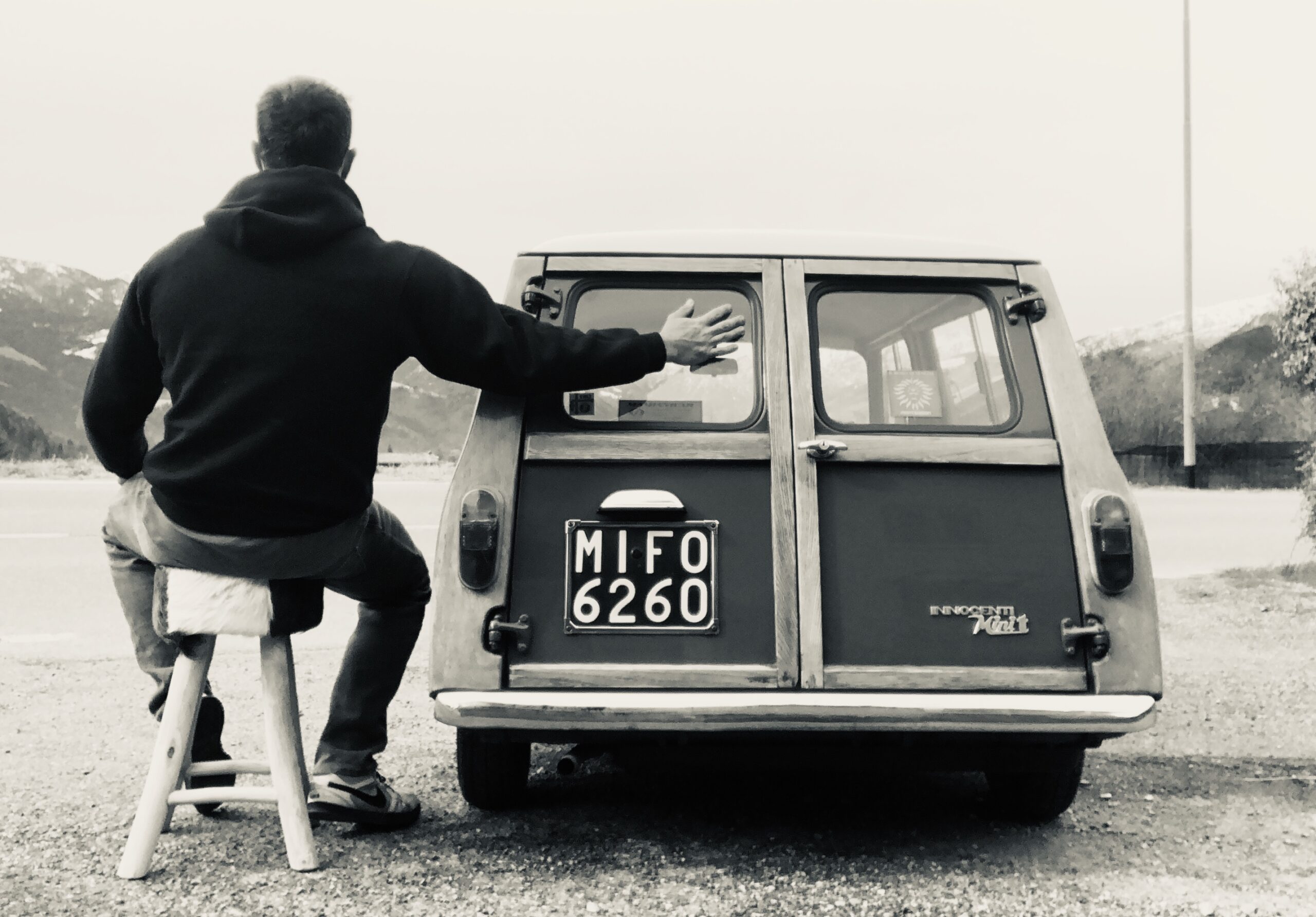
Not just a British phenomenon after all
The first Mini Traveller and Countryman cars were built as small Estates, with “barn-style” double doors. Austin called it the Mini Countryman, while Morris branded it as the Traveller. It Italy, Innocenti called it the “T LEGNO” (“T WOODY”).
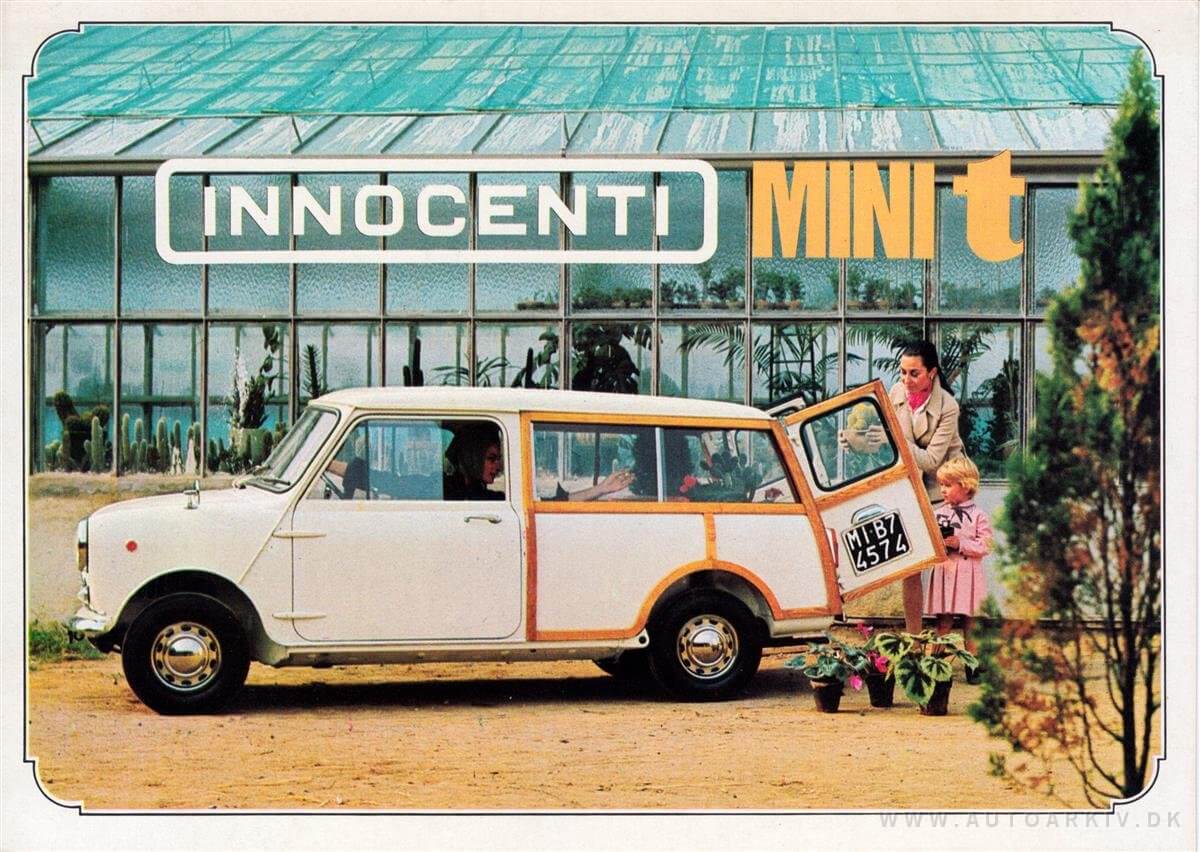
Prototypes of the Traveller/Countryman had been doing the rounds since 1959. But the first official Austin Seven Countryman was built at Longbridge on 15th March 1960. It was targetted at “the working man”, but ended up being adopted as a cute second car for the weekend or for mothers roaming around the city in style.
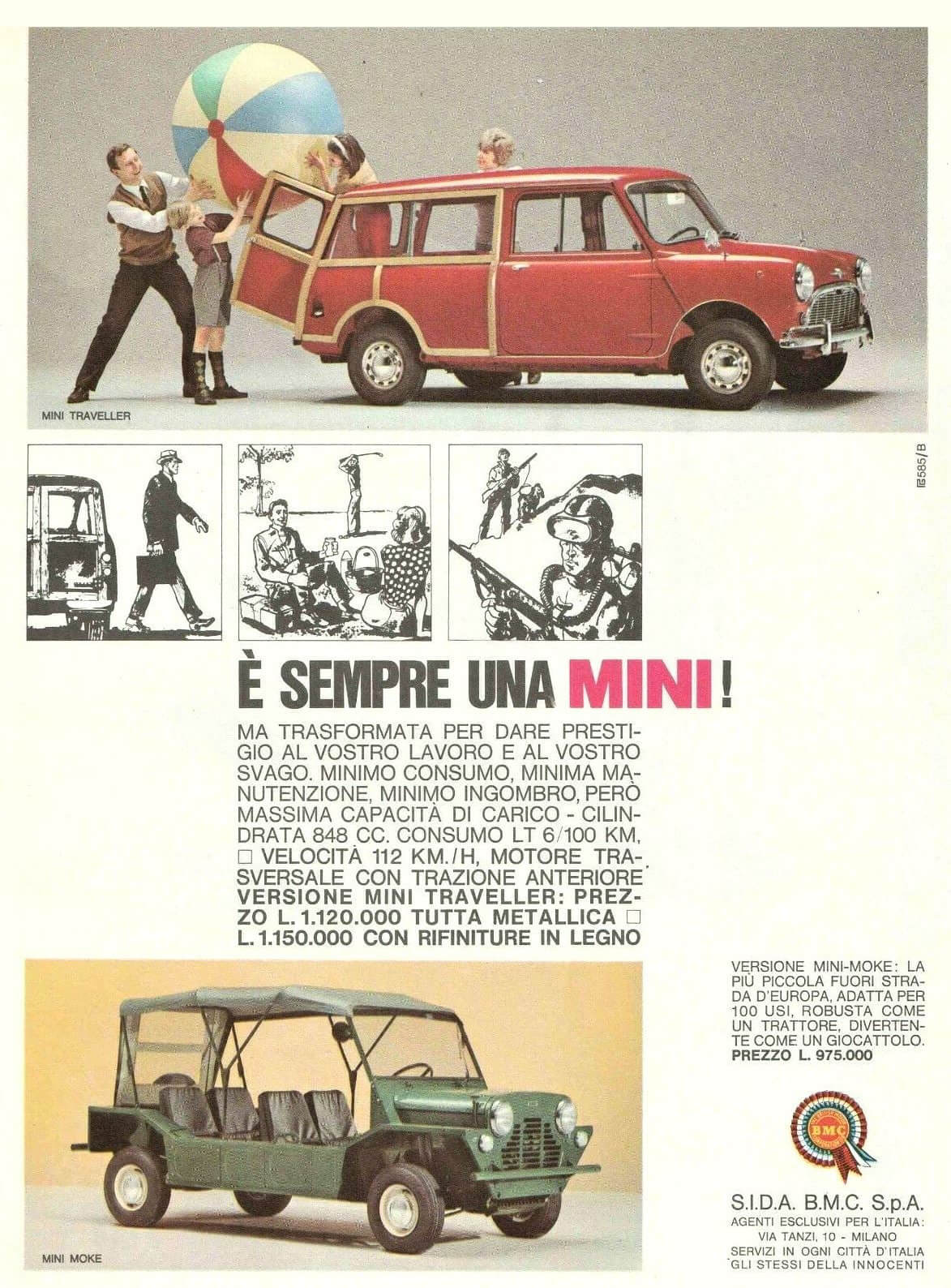
The Mini Traveller was actually put to work – heavy work – by local councils, electric companies, movers, bakers, and anyone else who had to carry a load for work … but always in style:)

My mom, Lillian Jacks, has always been a woman ahead of her time. In 1967/68 and ’69, she was a Mini Cooper rally driver and was crowned number 2 champion in Italy at Trofeo Innocenti. She was then invited to the World Championship in Egypt but her dad, maybe correctly, didn’t let her travel.
Her daily drivers were a beige and black Innocenti Mini Cooper and this Innocenti Mini T.
Bought new in 1968, and sold in ’74… I miraculously stepped into it in 2014, when I found it for sale again over the internet, near Venice. No need to continue with this story, am I right?!
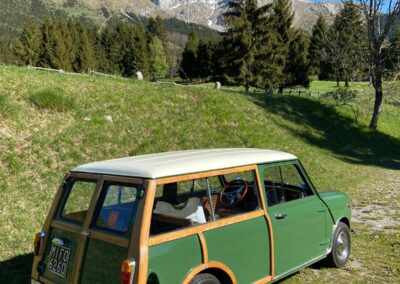

Model years for Mini
Showing 5 of 5 related listings

1982 British Leyland Mini 1000
- 37,800 km (23,488 mi)
- Location: Jefferson County, Colorado, USA
- Originality: Modified Vehicles with a period-correct engine and body, with multiple removable modifications, or a few significant modifications such as increased displacement, added performance equipment (turbo, supercharger, headers), transmission swaps, bumpers, or body wraps. Modified vehicles can generally be returned to original factory specifications.
- Transmission: Manual
- Driver side: RHD

1982 Mini Clubman Estate
Lot 201: 1982 mini clubman estate.

- 12,821 mi TMU
- Location: England, GBR
- Originality: Original & Highly Original Vehicles that are original or close to original factory specifications, irrespective of condition. May include vehicles that have minor, removable modifications such as aftermarket wheels, exhaust, or accessories such as cargo/roof rack, stereos, etc.

1982 Mini Austin
Lot 58778385: 1982 mini austin.

- 84,200 km (52,319 mi) TMU
- Location: FRA
- Driver side: LHD

1982 Mini Cooper

- 78,300 mi TMU
- Location: Boerne, TX, USA

1982 Austin Morris Mini Clubman Estate hl 1275 GT
Lot 110: 1982 austin morris mini clubman estate hl 1275 gt.


Curbside Classic: 1966 Morris Mini Traveller – 1966 And All That

Finally, CC can be treated to the coolest Mini variant of them all: the woody Traveller. I had been catching glimpses of these here and there in this Mini-mad town, but it took me a couple years to find one standing still. And a pretty quirky one it was, too!

CC has covered the Mini pretty extensively by now, but not many LWB variants have been shown here. And of all the long Minis, the Traveller / Countryman has to be the most iconic. This one happens to be festooned with a pile of accessories, as well – a bit of bling always helps to keep up appearances.

And let’s face it, the Traveller is all about appearances. That timber, lovely though it may be, is decorative, not structural – unlike the Morris Minor wagons that were still being made in those years. In fact, the Traveller / Countryman was made from 1960 to 1969 only, whereas the older RWD Minor (because the Mini is also called “Minor” when wearing a Morris badge, just to add to the confusion) was made it all the way to 1971. And it was also called “Traveller,” as this was Morris-speak for “estate.”

Our feature car is one of the 99,000 that wears the Morris badge, but about 108,000 wood-clad Minis were of the Austin persuasion. A little over 8000 units were also assembled in Italy with an Innocenti badge as the Mini T (1966-70), but by and large, the woodie Minis are all either Austin or Morris. And being that they were only made until 1969, the majority of them are Mark 1 Minis (the Mark 2 arrived in late 1967).

Our time-Traveller hails from the year 1966 – a belter of a year, for all things British. London was the heart of fashion, cinemas were showing films like Alfie, Blowup and Fahrenheit 451, Peter Cook and Dudley Moore were on TV, England won the World Cup, the Beatles dropped Revolver… Crazy times. Mind you, one could pretty much say the same of most of individual years of the ‘60s. The tried and true rose-tinted glasses also help, of course.

As do rose-filled fender mirrors, obviously. The Flower Power movement was already well under way, though it hadn’t yet reached through every corner of the Western world yet. In the UK, the Mini was the fashionable car to be seen in – it was either that or a Phantom V and little in between, really – so this one is definitely keeping up with then-current trends.

The presence of yet another automatic transmission is giving me pause. The Mini and the ADO16 got a 4-speed auto as an option starting in 1965, but I do wonder if any Travellers were ever fitted with one. In any case, there are just too many automatic Minis in Japan – there must be a cottage industry, either in the UK or here, to turn manual Minis into automatic ones. It seems they did this back in the late ‘80s with a lot of Vanden Plas Princess 1100/1300s , so I bet the equally sought-after Traveller must have had the same operation done.

That’s not to say that the whole vehicle was scrubbed clean of any trace of its history. Expired since 30 November 1968, eh? Imagine the pre-decimal late fees on that!

OK, now that’s a bit much. I draw the line at lanterns, or whatever these are trying to be.

It’s interesting that the Mini moniker was only actually bestowed upon the Morris variant, albeit in a hyphenated form with the “Minor” name, though folks probably never bothered with that bit. In the same vein, I doubt anybody ever called the Austin version a “Seven.”

This late Mark 1 is also supposed to feature the famous hydrolastic suspension, which replaced the Mini’s rubber cone springs in 1964. This allegedly improved the Mini’s notoriously stiff ride quite a bit, but it also drove up costs – both manufacturing- and maintenance-wise, so the rubber cones returned in 1969 (or 1971 for the Clubman) and stayed there until the end of the Mini in 2000. It was hard enough for BMC / BL to squeeze a profit out of the Mini without adding a complex suspension into the mix.

I suspect that’s also why they quit gluing bits of dead tree on the Mini wagons. The esthetics and the snob appeal of the Traveller / Countryman were outweighed, in the end, by the cost-cutting simplicity of just having one all-steel long-roof Mini, with the Clubman Estate. This coincided with the nixing of the weirdo “big butt & chrome nose” Wolseley and Riley versions, which were also replaced by the staid-looking Clubman at the end of 1969.

The first decade of the Mini was really when the model was at its most attractive and fun, which I think is very well illustrated by this Traveller. It’s not taking itself too seriously, it’s floating on hydrolastic-fantastic cushions and has a wooden trunk, which sounds redundant, but is actually cool as can be. So this not-so-little but quite Memorable Mini is definitely a Good Thing.
Related posts:
Car Show Classic: 1960 Austin Seven (Mini) – The Future Started Here , by Roger Carr
CC Capsule: 1964 Morris Mini-Minor – Passing The Sniff Test? , by T87
Curbside Classic: 1980 Austin / BL Mini 95 Van – Just More Of It To Love , by T87
12 Comments
In a variation of the CC effect, Mrs. JPC and I watched an old movie this past weekend, an early postwar noir thriller called “I Love Trouble”, that featured a mysterious character driving around in a rare 1946 Ford Sportsman, the wood-body convertible. One scene of the movie has a woman describing the unusual car as “one of those cars still in the crate”. I fear that this description will now jump to mind every time I see a car with genuine wood on it, as this one has.
When my dad was in the military, one of these and an MG Midget 1500 were the only cars I spotted, that fit the mini garage-style storage units supplied to base personnel. It was dark green, and in excellent condition, circa 1975. This was at snowy and cold CFB Rockcliffe, and I am quite sure that Morris, had never seen a flake of snow in its life. It looked like a large toy, whenever it drove around the base. In the context, large American cars still ruled the roads. It was still possible to see many of these UK and European classics everyday, well into the late 70s. Really miss, that variety.
As a child visiting friends in Manchester, I was often one of 7 pushed into a Traveller: 3 adults and 4 pre-teens, two riding in the boot area. Not an uncommon experience before seatbelts and safety concerns.
BLMC didn’t completely give up on wood on the Mini Clubman. They sported an ersatz slab on each side for many years.
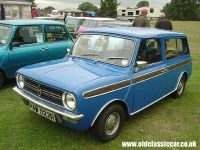
As with the Pinto and Pacer facelifts, the wagon body carries the Mini Clubman nose so much better than the sedan does.
It’s almost a shame the pickup and van didn’t get the Clubman front. Almost.
In Australia all our Minis got the Clubman front from about ’71. I’m trying to recall whether I ever saw a van with this front though. Theoretically….
These estates were factory conversions of the mini van model, there was also a LWB ute, quite rare in this country they were imported built up not CKD and locally assembled, I drove a van with 4 speed automatic once it was set up with hand controls also for the wheelchair bound owner which I tried out and found they worked well.
It appears the original owner wholesaled automotive accessories to auto spares shops, and his car was adorned with examples. Or perhaps whoever restored the car, hunted autojumbles to find a nice selections of accessories! I don’t think I’ve ever seen another Mini with a selection like this.
I noticed the license plate number is the same as the car year. In Japan is it possible to request certain number plates, or was this simply a lucky coincidence?
It must be possible, somehow, as we’ve seen this before on ‘cars of particular interest’ that Tatra has found. That interior brought back a lot of memories for me. Those switch-extenders, particularly. What was it with Issigonis designs and hostile ergonomics? I can understand the need for a fan, but a compass? In Tokyo? 🙂 Those floral mirrors are just amazing! And the pointy-ended (aerodynamic?) roof rack. I noticed it still carries the old British silver-on-black plate at the front, behind the shiny new Japanese one. A nice nod to the car’s past owners.
The lwb variants of the Mini were never given Hydrolastic suspension, probably because the front/rear interconnection gave Hydrolastic vehicles a nose up stance when they had a load in the boot. I love the featured car and the kitsch accessories.
Quite a find a long way from home. Yes, I suspect the auto is an aftermarket addition – the auto Mini was always an odd (and pricey) choice in the home market.
Fun facts – the auto came only with the 1000 engine and was offered before an all synchromesh gearbox.
But, to me, the wood, and there was a lot of it, always looked odd – here was a very modern car being made to look like a car (the Minor) that was in a post war continuum and should arguably have been replaced by another very modern (ADO16) car in 1962. Still, it was BMC…..
900 years from William the Conqueror and the Battle of Hastings to this Mini, then only 20 more years until the demise of British Leyland. An interesting time scale.
! those _MIRRORS_ ! .
I like gee-gaws more than most and have never seen the like .
Leave a Reply Cancel reply
Your email address will not be published. Required fields are marked *
Notify me of new posts by email.
This site uses Akismet to reduce spam. Learn how your comment data is processed .

Click for CC’s Privacy Policy
Curbside Classics Archives

Recent Comments
- BroughamChip on Ate Up With Motor Is In Dire Need Of Financial Support – Please Consider Helping Out
- JT on Cohort Pic(k)s Of The Day: 1970 Chrysler & Other ’70s Mopars At A Yard
- phil on Vintage Snapshots: Buick Owners In The 1960s – Portholes In The Swinging ’60s
- Dead Swede on Ate Up With Motor Is In Dire Need Of Financial Support – Please Consider Helping Out
- Paul Mittermaier on Vintage Snapshots: Buick Owners In The 1960s – Portholes In The Swinging ’60s
- Joseph Dennis on Ate Up With Motor Is In Dire Need Of Financial Support – Please Consider Helping Out
- Peter Wilding on Used Car Lot Walk & Talk: Humming An Ocean Lyriq During The Solstice
- Laura Ellyn on Ate Up With Motor Is In Dire Need Of Financial Support – Please Consider Helping Out
- Joseph Dennis on Cohort Classic: 1966 Pontiac GTO – A Brief Talk With The Legend
Copyright 2011 - 2024 Curbside Classics. All Rights Reserved.

MINI Classic Cars For Sale
15 matches found, classic car insurance.
Compare quotes from specialist classic insurance brands
Sell Your Classic Car For FREE
It's FREE to list your classic car on Honest John Classics and promote it to thousands of classic car buyers
Browse by model
- MINI 1000 1980
- MINI 1275GT 1980
- MINI Cooper 1980
- MINI Moke 1980
Browse by shape
- MINI 1980 Saloon
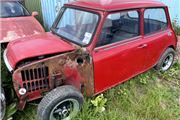

Mini History & Variants (1959-2000)
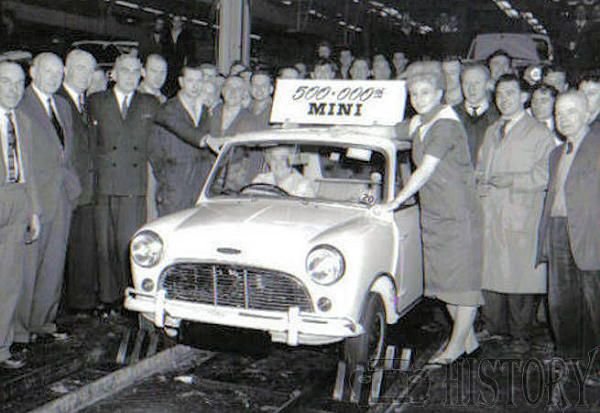
The Mini is a small economy car made by the British Motor Corporation (BMC) and its successors from 1959 until 2000. The original is considered a British icon of the 1960s.Its space-saving front-wheel drive layout – allowing 80 per cent of the area of the car's floorpan to be used for passengers and luggage – influenced a generation of car makers. The vehicle is in some ways considered the British equivalent of its German contemporary the Volkswagen Beetle, which enjoyed similar popularity in North America. In 1999 the Mini was voted the second most influential car of the 20th century, behind the Ford Model T.
This distinctive two-door car was designed for BMC by Sir Alec Issigonis. It was manufactured at the Longbridge and Cowley plants in England, the Victoria Park / Zetland British Motor Corporation (Australia) factory in Sydney, Australia, and later also in Spain (Authi), Belgium, Chile, Italy (Innocenti), Malta, Portugal, South Africa, Uruguay, Venezuela and Yugoslavia. The Mini Mark I had three major UK updates – the Mark II, the Clubman and the Mark III. Within these was a series of variations, including an estate car, a pick-up truck, a van and the Mini Moke – a jeep-like buggy. The Mini Cooper and Cooper "S" were sportier versions that were successful as rally cars, winning the Monte Carlo Rally four times from 1964 through to 1967, although in 1966 the Mini was disqualified after the finish, along with six other British entrants, which included the first four cars to finish, under a questionable ruling that the cars had used an illegal combination of headlamps and spotlights.
On introduction in August 1959 the Mini was marketed under the Austin and Morris names, as the Austin Seven and Morris Mini-Minor. The Austin Seven was renamed to Austin Mini in January 1962 and Mini became a marque in its own right in 1969. In 1980 it once again became the Austin Mini and in 1988 the Rover Mini.
Designated by Leonard Lord as project ADO15 ( A malgamated D rawing O ffice project number 15 ) and the product of the Morris design team, the Mini came about because of a fuel shortage caused by the 1956 Suez Crisis. Petrol was once again rationed in the UK, sales of large cars slumped, and the market for German bubble cars boomed. Lord, the somewhat autocratic head of BMC, reportedly detested these cars so much that he vowed to rid the streets of them and design a 'proper miniature car'. He laid down some basic design requirements: the car should be contained within a box that measured 10×4×4 feet (3.0×1.2×1.2 m); and the passenger accommodation should occupy 6 feet (1.8 m) of the 10-foot (3.0 m) length; and the engine, for reasons of cost, should be an existing unit. Issigonis, who had been working for Alvis, had been recruited back to BMC in 1955 and, with his skills in designing small cars, was a natural for the task. The team that designed the Mini was remarkably small: as well as Issigonis, there was Jack Daniels (who had worked with him on the Morris Minor), Chris Kingham (who had been with him at Alvis), two engineering students and four draughtsmen. Together, by October 1957, they had designed and built the original prototype, which was affectionately named "The Orange Box" because of its colour.
The ADO15 used a conventional BMC A-Series four-cylinder, water-cooled engine, but departed from tradition by mounting it transversely, with the engine-oil-lubricated, four-speed transmission in the sump, and by employing front-wheel drive. Almost all small front-wheel-drive cars developed since have used a similar configuration, except with the transmission usually separately enclosed rather than using the engine oil. The radiator was mounted at the left side of the car so that the engine-mounted fan could be retained, but with reversed pitch so that it blew air into the natural low pressure area under the front wing. This location saved vehicle length, but had the disadvantage of feeding the radiator with air that had been heated by passing over the engine. It also exposed the entire ignition system to the direct ingress of rainwater through the grille.
The suspension system, designed by Issigonis's friend Dr. Alex Moulton at Moulton Developments Limited, used compact rubber cones instead of conventional springs. This space-saving design also featured rising progressive-rate springing of the cones, and provided some natural damping, in addition to the normal dampers. Built into the subframes, the rubber cone system gave a raw and bumpy ride accentuated by the woven-webbing seats, but the rigidity of the rubber cones, together with the wheels' positioning at the corners of the car, gave the Mini go kart-like handling.
Initially an interconnected fluid system was planned, similar to the one that Alec Issigonis and Alex Moulton were working on in the mid-1950s at Alvis. They had assessed the mechanically interconnected Citroën 2CV suspension at that time (according to an interview by Moulton with Car Magazine in the late 1990s), which inspired the design of the Hydrolastic suspension system for the Mini and Morris/Austin 1100, to try to keep the benefits of the 2CV system (ride comfort, body levelling, keeping the roadwheel under good control and the tyre in contact with the road), but with added roll stiffness that the 2CV lacked. The short development time of the car meant this was not ready in time for the Mini's launch. The system intended for the Mini was further developed and the hydrolastic system was first used on the Morris 1100, launched in 1962; the Mini gained the system later in 1964. Ten-inch (254 mm) wheels were specified, so new tyres had to be developed, the initial contract going to Dunlop. Issigonis went to Dunlop stating that he wanted even smaller, 8 in (203 mm) wheels (even though he had already settled on ten-inch). An agreement was made on the ten-inch size, after Dunlop rejected the eight-inch (203 mm) proposition.
Sliding windows allowed storage pockets in the hollow doors; reportedly Issigonis sized them to fit a bottle of Gordon's Gin. The boot lid was hinged at the bottom so that the car could be driven with it open to increase luggage space. On early cars the number plate was hinged at the top so that it could swing down to remain visible when the boot lid was open. This feature was later discontinued after it was discovered that exhaust gases could leak into the cockpit when the boot was open.
The Mini was designed as a monocoque shell with welded seams visible on the outside of the car running down the A and C pillars, and between the body and the floor pan. Those that ran from the base of the A-pillar to the wheel well were described as 'everted' (lit., 'turned outward') to provide more room for the front seat occupants. To further simplify construction, the hinges for the doors and boot lid were mounted externally.
Production models differed from the prototypes by the addition of front and rear subframes to the unibody to take the suspension loads, and by having the engine mounted the other way round, with the carburettor at the back rather than at the front. This layout required an extra gear between engine and transmission to reverse the direction of rotation at the input to the transmission. Having the carburettor behind the engine reduced carburettor icing, but the distributor was then exposed to water coming in through the grille. The engine size was reduced from 948 to 848 cc (57.9 to 51.7 cu in); this, in conjunction with a small increase in the car's width, cut the top speed from 90 mph (140 km/h) to 72 mph (116 km/h).
The Mini shape had become so well known that by the 1990s, Rover Group – the heirs to BMC – were able to register its design as a trademark in its own right.
The popularity of the original Mini spawned many models that targeted different markets.
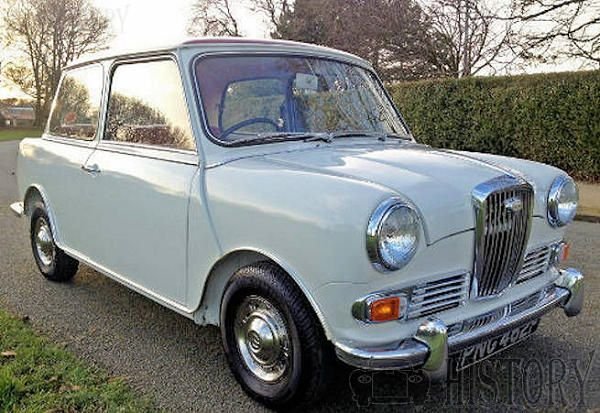
Wolseley Hornet and Riley Elf (1961–1969)
Built as more luxurious versions of the Mini, both the Wolseley Hornet and the Riley Elf had longer, slightly finned rear wings and larger boots that gave the cars a more traditional three-box design. Wheelbase of the Elf and Hornet remained at 2.036 m (6.68 ft), whereas the overall length was increased to 3.27 m (10.7 ft). This resulted in a dry weight of 638 kg (1,407 lb)/642.3 kg (1,416 lb) (rubber/hydrolastic suspension) for the Elf and 618 kg (1,362 lb)/636.4 kg (1,403 lb) for the Hornet respectively. Front-end treatment, which incorporated each marque's traditional upright grille design (the Hornet's grille with a lit "Wolseley" badge), also contributed to a less utilitarian appearance. The cars had larger-diameter chrome hubcaps than the Austin and Morris Minis, and additional chrome accents, bumper overriders and wood-veneer dashboards. The Riley was the more expensive of the two cars. The name "Wolseley Hornet" was first used on a 1930s sports car, while the name "Elf" recalled the Riley Sprite and Imp sports cars, also of the 1930s. The full-width dashboard was a differentiator between the Elf and Hornet. This dashboard was the idea of Christopher Milner the Sales Manager for Riley. Both the Riley Elf's and Wolseley Hornet's bodies were built at Fisher & Ludlow under their "Fisholow" brandname. Plates in the engine compartment on the right side fitch plate bear evidence of this speciality. Very early Mark I versions of both cars (e.g. press photo of 445MWL) had no overriders on the bumpers and a single piece front wing (A-panel and wing in one piece, no outside seam below scuttle panel) that was soon given up again, allegedly due to cost. The Elf's and Hornet's special bumper overriders first appeared in 1962. Early production Mark Is also had a combination of leather and cloth seats (Elf R-A2S1-101 to FR2333, Hornet W-A2S1-101 to FW2105) whereas all later models had full leather seats. Mark I models were equipped with single leading shoe brakes on the front.
Both the Elf and the Hornet went through three versions. Initially, they used the 848 cc (51.7 cu in) 34 bhp (25 kW) engine (engine type 8WR) with a single HS2 carburettor, changing to a single HS2 carburettor 38 bhp (28 kW) version of the Cooper's 998 cc (60.9 cu in) power unit (engine type 9WR) in the Mark II in 1963. This increased the car's top speed from 71 to 77 mph (114 to 124 km/h) . Therefore, Mark II cars also came with increased braking power in the form of front drum brakes with twin leading shoes to cope with the increased power output. Both Mark I and Mark II featured four-speed, gearboxes (three synchromesh gears) with rod gear change, a.k.a. "magic wand" type. Automatic gearboxes became available on the Mark II in 1965 as an option. The Mark III facelift of 1966 brought not only wind-up windows and fresh-air facia vents, but disc brakes replaced front drum brakes, too. Concealed door hinges were introduced two years before these were seen on the mainstream Mini. The gear selecting mechanism was updated to the rod type, as seen on all later Mini type cars. Automatic gearboxes were available to the Mark III in 1967 again. Full-four synchromesh gearing was eventually introduced during 1968. 30,912 Riley Elfs and 28,455 Wolseley Hornets were built. Production ceased in late 1969 when British Leyland discontinued the Riley and Wolseley brand names.
Vehicle Identification – Serial Number Prefix Letter Code:
- First prefix letter – name: R-Riley, W-Wolseley
- Second prefix letter – engine type: A
- Third prefix letter – body type: 2S – 2-door Saloon
- Fourth prefix – series of model: 1 – 1st series, 2 – 2nd series, 3 – 3rd series
- Fifth prefix (used to denote cars different to standard right hand drive): L – left hand drive
Code example: R-A2S1-154321 (Riley, A type engine, 2 door saloon, 1st series, serial number "154321")
Morris Mini Traveller and Austin Mini Countryman (1961–1969)
Two-door estate cars with double "barn"-style rear doors. Both were built on a slightly longer chassis of 84 inch (2.14 m) compared to 80.25 inch (2.04 m) for the saloon.
The luxury models had decorative, non-structural wood inserts in the rear body which gave the car a similar appearance to the larger Morris Minor Traveller which had some of the look of an American-style 1950s Woodie. Approximately 108,000 Austin Mini Countrymen and 99,000 Morris Mini Travellers were built.

Mini Van (1960–1982)
A commercial panel van (in US English, a sedan delivery) rated at ¼-ton load capacity. Built on the longer Traveller chassis but without side windows, it proved popular in 1960s Britain as a cheaper alternative to the car: it was classed as a commercial vehicle and as such carried no sales tax. A set of simple stamped steel slots served in place of a more costly chrome grille. The Mini Van was renamed as the Mini 95 in 1978, the number representing the gross vehicle weight of 0.95 tons. 521,494 were built.
Mini Moke (1964–1989)
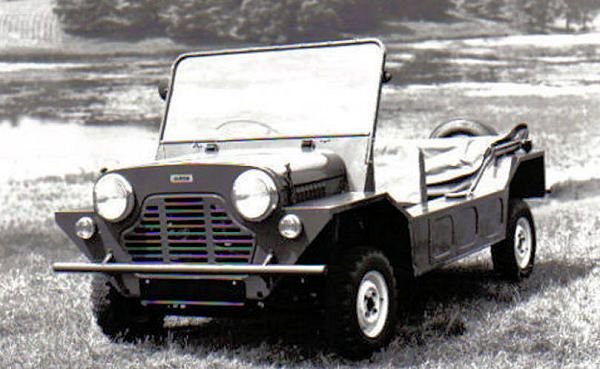
A utility vehicle intended for the British Army was built with a twin-engined 4-wheel-drive. Although the 4WD Moke could climb a 1:2 gradient, it lacked enough ground clearance for military use. The single-engined front-wheel-drive Moke enjoyed some popularity in civilian production. About 50,000 were made in total, from 1964 to 1968 in the UK, 1966 to 1982 in Australia and 1983 to 1989 in Portugal.The Moke was marketed in holiday locations such as Barbados and Macau, where they were also used as police cars. "Moke" is archaic British slang for a donkey.
Mini Pick-up (1961–1982)
A pick-up truck (technically a coupé utility by definition), 11 ft (3.4 m) in total length was built on the longer Mini Van platform, with an open-top rear cargo area and a tailgate. The factory specified the weight of the Pick-up as less than 1,500 lb (680 kg) with a full 6 imperial gallons (27 l; 7.2 US gal) tank of fuel.
As with the Van, the Pick-up had stamped metal slots for airflow into the engine compartment. The Pickup was basic, although the factory brochure described a "fully equipped Mini Pick-up is also available which includes a recirculatory heater." Passenger-side sun visor, seat belts, laminated windscreen, tilt tubes and cover were also available at extra cost. Like the van, the Pick-up was renamed as the Mini 95 in 1978.
A total of 58,179 Mini Pick-up models were built.
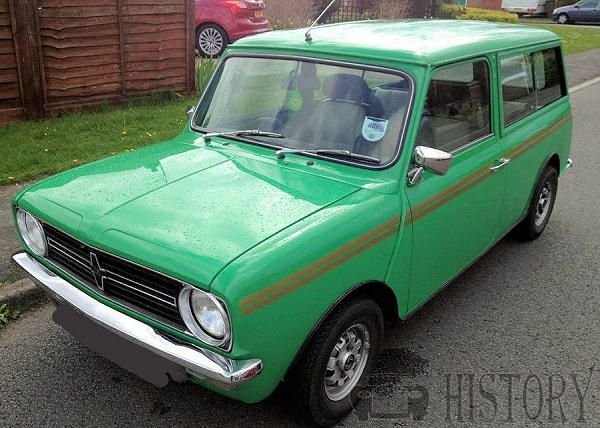
Morris Mini K (March 1969 – August 1971) , Australia
Built in the Australian British Motor Corporation factory at Zetland, New South Wales, using 80% local content, the Morris Mini K was advertised as the "great leap forward". The Mini K ('K' standing for Kangaroo) had a 1098 cc engine and was the last round-nose model to be produced in Australia, originally priced at A$1780. The Mini K was offered in 2-door sedan and 2-door van body styles.
Throughout the 1980s and 1990s the British market received numerous "special editions" of the Mini, which shifted the car from a mass-market item into a fashionable icon. It was this image that perhaps helped the Mini become such an asset for BMW, which later bought the remnants of BMC as the Rover Group. It was even more popular in Japan, which took the lion's share of the circa 40,000 Minis produced annually in the early 1990s. It was seen there as a retro-cool icon, and inspired many imitators. The ERA Mini Turbo was particularly popular with Japanese buyers.
In 1994, under Bernd Pischetsrieder, a first cousin once removed of Issigonis, BMW took control of the Rover Group, which included the Mini, fitting an airbag to comply with European legislation.
By March 2000, Rover was still suffering massive losses, and BMW decided to dispose of most of the companies. The sell-off was completed in May that year. MG and Rover went to Phoenix, a new British consortium; and Land Rover was sold to Ford Motor Company. BMW retained the Mini name and the planned new model, granting Rover temporary rights to the brand and allowing it to manufacture and sell the run-out model of the old Mini. By April 2000, the range consisted of four versions: the Mini Classic Seven, the Mini Classic Cooper, the Mini Classic Cooper Sport and—for overseas European markets—the Mini Knightsbridge. The last Mini (a red Cooper Sport) was built on 4 October 2000 and presented to the British Motor Industry Heritage Trust in December of that year. A total of 5,387,862 cars had been manufactured.
After the last of the Mini production had been sold, the 'Mini' name reverted to BMW ownership. The new BMW Mini is technically unrelated to the old car but retains the classic transverse four-cylinder, front-wheel-drive configuration and iconic "bulldog" stance of the original.
The last Mini to leave the Longbridge plant did so in 2012, when a 1970s 1275GT which was used by staff to travel around the car plant was recovered from the disused tunnels under the plant. The car was damaged by a storage container falling on it and had been left without an engine or gearbox for around 30 years before being recovered during work to infill the tunnels. This car was sold at auction in July 2013 for £1400.
- August 1959: Introduction of the Austin Seven, Morris Mini-Minor and Morris Mini-Minor DL 2-door saloons, all with transversely mounted 848 cc engine and 4-speed manual gearbox.
- 1960: Introduction of the Austin Seven Countryman and Morris Mini-Minor Traveller 3-door estates, both with 848 cc engine from the saloon models. 116,667 cars built in the first full year of production.
- 1961: Introduction of the Austin Seven Super and Morris Mini-Minor Super 2-door saloons.
- 1961: Introduction of the Austin Mini Cooper and Morris Mini Cooper 2-door saloon, both with larger 997 cc 55 bhp (41 kW) engine.
- January 1962: All former Austin Seven models now officially called Austin Mini.
- March 1962: pvc seat covers replaced cloth upholstery on entry level model ("basic Mini").
- 1962: "De Luxe" and "Super" designations discontinued. "Super de Luxe" designation introduced. Modified instrument panel now included oil pressure and water temperature gauges.
- March 1963: Introduction of the Austin Mini Cooper 1071 S and Morris Mini Cooper 1071 S 2-door saloons, both with larger 1071 cc 70 bhp (52 kW) engine.
- 1964: Introduction of the Mini Moke.
- April 1964: Introduction of the Austin and Morris Mini-Cooper 998, Mini-Cooper 970 S and Mini-Cooper 1275 S. 1275 S models have 1275 cc 76 bhp (57 kW) engine. Automatic transmission available as an option for the 998 cc Austin Mini-Cooper 998 and 1275 S. Previous Mini-Cooper 997 and 1071 S models dropped.
- 1965: Mini Cooper 970 S discontinued.
- October 1965: Automatic transmission now available as an option on standard Austin/Morris Mini and Morris Mini SDL.
- October 1967: Mark 2 range launched with facelift and upgraded equipment. Austin Mini range as follows: 850, 1000, Cooper 998 and Cooper 1275 S 2-door saloons and 1000 Countryman 3-door estate. Morris Mini range as follows: 850, 850 SDL, 1000 SDL, Cooper 998 and Cooper 1275 S 2-door saloons and 1000 Traveller 3-door estate. Optional automatic transmission available on all Austin models (except 850) and Morris Mini 1000 SDL saloon.
- September 1968: Manual four speed gear box with synchromesh on all four forward ratios introduced.
- March 1969: Launch of the Morris Mini K an Australian-only model manufactured in the Australian British Motor Corporation factory at Zetland NSW using 80% local content
- October 1969: Separate Austin and Morris badging now merged into Mini 850/Mini 1000 badging. Range reduced to: 850, 1000, Clubman, Cooper S and 1275 GT 2-door saloon and Clubman 3-door estate. Optional automatic transmission available on all except 1275 GT.
- April 1974: A heater became standard equipment on the entry level Mini 850 (having now already been included in the standard specification of the other models for some time).
- 1980: The Mini becomes the Austin Mini.
- 1988: The Austin Mini becomes the Rover Mini.
Limited editions
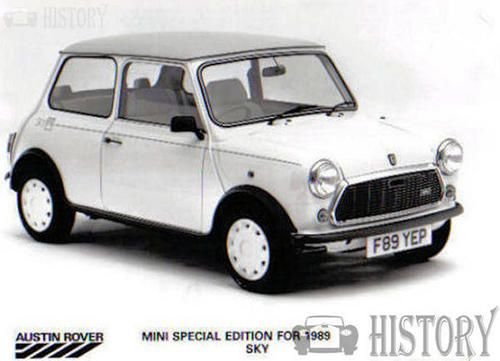
From the Mark IV onward, many special limited-production editions of the Mini were offered. These included models that were created to commemorate racing victories or to celebrate an anniversary of the Mini marque. Limited editions generally came equipped with a unique combination of interior and exterior trim and special decals. Examples include Mini 1100 Special, Mini Rio, Mini Mayfair, Mini Park Lane, Mini Italian Job, Mini Cooper RSP, Mini Flame, Mini Red Hot, Mini Jet Black, Mini Racing and the Mini Monza.
Concepts and unproduced prototypes
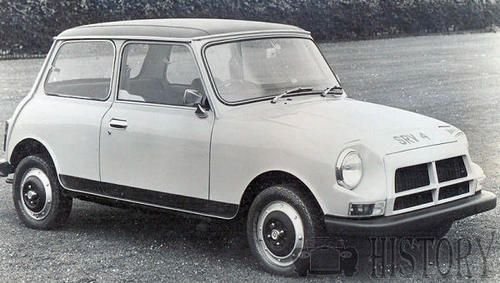
From 1967 to 1979, Issigonis had been designing a replacement for the Mini in the form of an experimental model called the 9X. It was longer and more powerful than the Mini, but due to politicking inside British Leyland (which had now been formed by the merger of BMC's parent company British Motor Holdings and the Leyland Motor Corporation), the car did not reach production.
A number of prototypes produced for vehicles based on the Mini but which never saw production are held and sometimes displayed at the British Heritage Motor Centre museum at Gaydon, Warwickshire. These included the Twini, a re-engineered four-wheel-drive Moke with two engines—one at the front and another at the back; the Austin Ant, a second attempt to produce a four-wheel-drive vehicle, this time using a transfer case; and a two-seater convertible MG edition of the Mini, cancelled due to it being perceived as competition for the MG Midget.
In 1992, a project considering possible improvements to the Mini was started. Codenamed Minki ("Mini" plus K-Series engine), it included a redesigned dashboard, a two-piece rear door or tailgate instead of a boot, fold down rear seats, Hydragas suspension and a 3-cylinder version of the K-Series engine with a 5-speed gearbox.
However, the project was cancelled by management within Rover, who decided that the cost of engineering the changes, and achieving compliance with modern crash testing standards, was too great for the production volumes that could be expected of an updated Mini.
In 1995 the idea to update the Mini again surfaced but this time with BMW management. As part of the process of deciding how to replace the Mini, a vehicle representing what the current Mini could have become, if it had been developed further over its production history, was commissioned. This resulted in the Minki-II , designed to house the 1.4L MPI K-Series engine with an extensive redesign inside, but without the original Minki's tailgate. The car had to be widened by 50mm and lengthened by 50mm to accommodate the new engine and gearbox, with Hydragas suspension and dashboard from a Rover 100. The Minki-II was used for Hydragas development work, this suspension being considered at the time for the R59 project, later to become the Mini Hatch.
Maintenance
Maintenance advanced data.
Members Only ! >> Register here. <<
Models and years covered 1910 to around 2020 all make and years. Car and Commercial vehicles Worldwide including basic to advanced.
Including Below on request for members..
- Engine rebuilds
- Manufacturer recall checks
- Known problems
- Trouble shooting
- Wiring diagrams
- Transmission rebuilds
- Wheel alignment data
- Dimensions and sizes
- Torque wrench settings
- Carburettors
- Injection systems
- Cooling system
- Serial number locations
Classic Mini review (1959–2000) motor car history
Manufacturer A-Z
More on motor car.
- Volvo Duett (1953-1969)
- Hart Lutonia (1900-1903)
- Sevel Argentina (1980-1999)
- Surrey Bliss (1958-1960)
- Mini related
- Commercial vehicles
- Monte Carlo Rally
- BMC A-Series Engine
- BMC B-series Engine
- Wheeler Dealers cars
- Alec Issigonis
- Vehicles launched in 1959
- Vehicles launched in 1962
- Vehicles launched in 1964
- British Automotive 1950s
- British Automotive 1960s
- British Automotive 1970s
- British Automotive 1980s
- BMC Related
- Mini Clubman
Daily demonstrations at 11am, free with admission!

Morris Mini Traveller- 1967
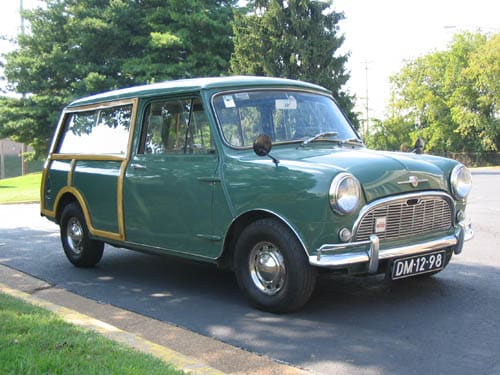
Morris Motor Company was started in the 1920s and established a reputation for reliable family cars. In the 1950s, Morris merged with its old rival Austin to form British Motor Corp. Economic factors in the UK in the mid-1950s made the creation of “a proper miniature car” a priority, and BMC assigned a small team of designers to the task. Alec Issigonis, a Greek immigrant with an extensive racing and engineering background, led the design team. Mini was introduced in 1959, to wild acclaim. The popularity of the Mini spawned many models that targeted different markets. The Mini Traveller, a two door station wagon with double “barn-door” style rear doors, was designed for carrying. The luxury model you see here has wood inserts in the rear body. This left-hand drive Mini was designed for export and was originally delivered to a dealer in Portugal. It remained in Europe until 2002.

Carlsbad's 1982 spending limit could be back on the ballot in November
C arlsbad voters could be asked in November whether to change Proposition H, a ballot measure they approved in 1982 that requires a citywide vote on most projects costing more than $1 million.
The City Council asked for more information Tuesday on a proposed new limit, exemptions and other details to be brought back at their June 11 meeting. The deadline is Aug. 9 to include the issue in this fall's general election.
Mayor Keith Blackburn suggested the council consider asking voters for a new maximum of $5 million, which he said would make the city more "nimble" and avoid the costs of frequent ballot measures. The San Diego County Registrar of Voters Office estimates the cost of adding the measure this year is between $135,000 and $170,000. A special election can cost the city more than twice that amount.
Another factor is the time a ballot measure adds to a project during which construction costs continue to rise, he said. Other council members advised further investigation before asking voters for changes.
"It would be prudent if we put this off for a couple weeks until we look at our budget, so that we know ... what projects would be affected," said Councilmember Carolyn Luna. "I don't think that would affect our timetable."
Staffers presented four options Tuesday: 1. increase the limit, include exemptions and add an index for future increases; 2. repeal the ordinance approved in 1982; 3. place both a higher limit and the repeal on the ballot and let voters pick one; and 4. take no action.
Council members voted unanimously to wait until after an upcoming presentation on next year's budget before choosing an option. They asked for more information about things such as any expected projects that could be affected by the measure to be presented at their June 11 meeting.
The $1 million limit set more than 40 years ago would equal about $3.25 million in today's dollars. The limit primarily covers the purchase of property or improvements to existing property paid for with city tax revenue, and excludes projects funded by other sources such as the in-lieu fees paid by developers.
Two residents spoke in support of increasing the amount, but offered different approaches.
Steve Linke, a member of the city's Traffic and Mobility Commission and the Growth Management Citizens Committee, suggested a new limit that would be adjusted according to the consumer price index or a construction costs index. He also asked for the exemption of more "non-discretionary" projects such as a new fire station or other infrastructure projects needed to accommodate growth.
However, Carlsbad resident and small business owner Jean Walker opposed any exemptions.
"The cost of everything has increased and that is expected over time, especially 40 years," Walker said, but "I urge you not to support exempting any category ... placing spending issues on the ballot will increase the city's accountability and save the city millions of dollars in the long run."
Past big-budget items approved by Carlsbad voters include the purchase of Hosp Grove and the construction of the city's Crossings golf course, Fire Station No. 2, Alga Norte Park and, most recently, the renovation of the Monroe Street pool.
Future projects that could require approval include a park proposed for the relatively new Robertson Ranch development and the construction of Fire Station No. 7, which would be the city's first permanent station west of Interstate 5.
This story originally appeared in San Diego Union-Tribune .
©2024 The San Diego Union-Tribune. Visit sandiegouniontribune.com. Distributed by Tribune Content Agency, LLC.
- International edition
- Australia edition
- Europe edition
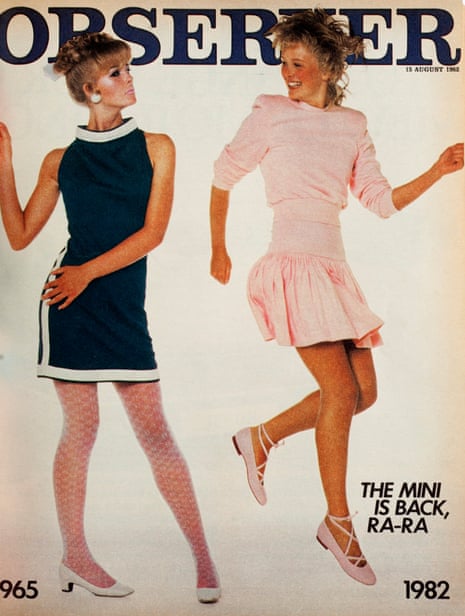
From the archive: the return of the mini skirt, 1982
Short skirts were back, but with a difference: now they were called ra-ras
‘T he mini is back, ra-ra,’ announced the Observer Magazine of 15 August 1982. They’ve been back since, of course. Their most recent revival was in 2019, partly due to the V&A’s exhibition on Mary Quant, according to the Guardian – but this was their first return. That’s an early original John Bates on the cover (above, left), and a pink miniskirt (right), by Norma Kamali (£30) and pink leather shoes by Manolo Blahnik (£80).
‘In 1965, the mini had started its climb up the nation’s legs,’ wrote Sally Brampton. ‘Girls were flaunting skirts not much wider than belts strapped around their upper thighs, and dresses that were no more than the briefest of triangles.’
Expanding on this stark geometry, she continued: ‘The new fashion brutalism of the 60s turned women into androgynous creatures: tall, stick-like beings with lips silvered and frosted, set in dead white faces from which peered their great, dark-painted eyes.’
The 60s clothing had been a reflection of an affluent and permissive time just as the clothes of the 20s were, but ‘it was the 60s that marked the real youth revolution’.
The Observer Magazine cover stylists had urged the 60s model to ‘look awkward’, as she ‘stiffened into the marionette pose of a badly jointed doll’ so that they could achieve the desired contrast with the looser 80s look.
‘Once again the brief banners of youth flutter down every high street,’ said Brampton, ‘but their effect is tame, no longer a statement of rebellion.’ The ‘stiff futurism of the 60s’ had softened. ‘The new short skirts – called ra-ras after the garments worn by American cheerleaders – are cheerfully unassuming frills of fabric.’
Brampton reckoned that to those wearing ra-ras, 60s minis were museum pieces. But just as 60s minis were an expression of their time, so 80s ra-ra skirts were very much of theirs.
- Life and style
- From the Observer archive
Most viewed
- Search Please fill out this field.
- Manage Your Subscription
- Give a Gift Subscription
- Newsletters
- Sweepstakes
If you click on links we provide, we may receive compensation.
- Travel Products
- Trends + Deals We Love
I Refuse to Iron When I Travel, so I’m Eyeing These 10 Wrinkle-free Styles at Target
These stretchy, no-fuss fabrics are my new best friend.
:max_bytes(150000):strip_icc():format(webp)/Screenshot2023-07-19at4.22.21PM1-5bbb3a2d42e443d38b5fe21d4aede125.png)
Travel + Leisure
Despite the fact that I own a portable steamer, I rarely make enough room in my suitcase for it. Instead, I prioritize clothing that won’t wrinkle in the first place, like classic and comfy T-shirt dresses , jumpsuits , and athleisure styles that can easily be dressed up or down.
While finding wrinkle-free pieces that you can toss in your carry-on and immediately wear afterwards is easier said than done, Target just dropped more than 800 new designs that don’t require you to break out the shifty hotel room iron. Keep scrolling to browse 10 no-fuss styles starting at just $12.
Wrinkle-Free Clothing in Target’s New Arrivals Section
- Wild Fable Scoop Back Ribbed Mini Bodycon Dress , $12
- A New Day Maxi Jumpsuit , $40
- Wild Fable ButterBliss Mini Skort , $18
- Universal Thread Short-Sleeve Shirtdress , $32
- A New Day Best Ever Midi Dress , $35
- Wild Fable Keyhole ButterBliss Knit Mini Slip Dress , $20
- A New Day Short-Sleeve Mini T-Shirt Wrap Dress , $25
- Wild Fable Mid-Rise Wide-Leg Cargo Beach Pants , $32
- A New Day Crewneck Button-Down Vest , $22
- All in Motion Square Neck Cropped Tank Top , $20
All in Motion Square Neck Cropped Tank
This $20 square neck cropped tank , which looks so similar to an $88 version I already own, is “supportive for larger chests” and “comfortable for all day wear,” according to one shopper. It’s also a more functional choice than my pricier piece thanks to its moisture-wicking and quick-drying fabric, built-in shelf bra with removable pads, and UPF 50+ material that keeps you protected from the sun. A second reviewer added that the top is “sporty yet could easily be dressed up,” while a third chimed in that they “love how versatile” it is.
A New Day Maxi Jumpsuit
Customers praised this maxi jumpsuit for its impressive fabric with “low wrinkle potential,” and said it “fit like a dream.” The sleek black design is perfectly tailored with a straight-leg silhouette and square neckline that’s effortlessly chic, while the stretchy smocked back is universally flattering and comfortable to wear thanks to a custom fit. Another shopper called the $40 jumpsuit “very versatile.”
A New Day Short-Sleeve Mini Dress
A comfortable and wrinkle-free T-shirt dress is one of the smarter styles to have in your travel wardrobe. Not only will it go with everything, but you can conveniently pack it away without worrying about how it will look when you open up your suitcase. A New Day’s short-sleeve version comes in four colors, including black, white, dark green, and coral pink, and sizes ranging from XS to 4XL. One shopper raved that the “fabric feels much more expensive” and “has some nice stretch to it,” while another added that they “love that you can dress it up,” or wear it with casual sneakers.
Wild Fable ButterBliss Mini Skort
I love athleisure styles that can easily be dressed up for an elevated look, and this Wild Fable mini skort just so happens to fit that description. It’s comfortable enough to wear on a long-haul flight while the classic black and white design can be styled just as well for dinner upon arrival. The skort also has a matching top to complete the look. Plus, the recycled polyester and spandex material is lightweight and wrinkle-resistant, so you can toss it in your luggage or relax on the plane without worrying about needing an iron or steamer at your destination.
Ahead, you’ll find more wrinkle-free new arrivals at Target that make it so easy to pack — and then unpack.
Wild Fable Scoop Back Ribbed Mini Bodycon Dress
Universal thread short-sleeve shirtdress, a new day best ever midi dress, wild fable keyhole butterbliss knit mini slip dress.
Love a great deal? Sign up for our T+L Recommends newsletter and we’ll send you our favorite travel products each week.
Shop More T+L-Approved Picks
:max_bytes(150000):strip_icc():format(webp)/TAL-paris-mother-son-lead-tout-DIGISSUEFAMTRVL0423-92672ac1d341453da35ff7813b7af682.jpg)
Related Articles
Prince Harry and Meghan Markle travel to Nigeria for 'mini royal tour'
- Prince Harry
- Meghan Markle
- Thursday 9 May 2024 at 7:18pm
Royal Editor

The Duke and Duchess of Sussex will arrive in Nigeria on Friday following Harry’s three day visit to the UK during which he did not meet either his father or his brother.
It will be the first trip to the West African country for both Harry and Meghan and follows Meghan’s recent revelation that she has Nigerian ancestry.
The couple had received an invitation from Nigeria’s Defence Ministry when they were at the last Invictus Games tournament in Germany.
Nigeria has expressed an interest in hosting the Games in the future and the Sussexes will attend a number of military events during their stay in the country.
Prince Harry founded the Invictus Games for wounded and sick military personnel in 2014.
It’s since been held in cities across the world including Sydney, Toronto and The Hague.
This week, Harry travelled alone to the UK for the tenth anniversary service of Invictus at St Paul’s Cathedral but Meghan deciding to avoid the trip to London.
But in Nigeria, the Duke and Duchess will be back together in the capital Abuja and will meet the country’s Chief of Defence Staff as well as travel north to Kaduna to visit wounded Nigerian soldiers.
Prince Harry will watch a sitting volleyball match for wounded veterans and Meghan also has her own programme of events away from the Invictus Games.
She will co-host a Women in Leadership event with the first woman and first African to serve as Director-General of the World Trade Organisation, Ngozi Okonjo-Iweala.
Some have already called their visit a “mini royal tour” the irony of which will not be lost on Harry’s family in London, given they chose to leave the Royal Family and set up a new life in California.
On Sunday, Harry and Meghan will fly to Lagos on the west coast where they will attend a “basketball clinic” called Giants of Africa at a local school and be the guests at a cultural reception of prominent Nigerians.
Although King Charles has visited Nigeria before - as Prince of Wales - he’s not been able to visit Nigeria, a Commonwealth country, since he became Monarch.
The King and Harry did not find time to meet when Harry was in London despite being at events just two miles from each other.
Harry’s office issued a statement blaming his father’s schedule, saying Charles was too busy with other commitments to see his son.
This is the Royal Rota - our weekly podcast about the royal family, with ITV News Royal Editor Chris Ship and Producer Lizzie Robinson.

IMAGES
VIDEO
COMMENTS
Mini Travel. Order your Thailand Vehicle Insurance & Border documents now. We will prepare the Thailand Vehicle Insurance ( Compulsory & Voluntary ) , White Card ( TM6 ), TM 2/3 for you. Skip to content. Mini Travel ... — 1982 mini travel sdn.bhd. 43rd anniversary — ...
Frequantly asked question What is the difference between Compulsory Insurance & Voluntary Insurance ?Answer : 1. Compulsory Insurance is a must to have for every vehicle entering Thailand as stated in "Motor Victims Protection Act B.E. 1992". While it is a must, the coverage only cover the opposite victim's bodily injuries of the accident.2 ...
main menu. home; services; contact; anniversary; find us; faq; order
We do a second take on the classic '80s TV show, VOYAGERS! with Jon-Erik Hexum and Meeno Peluce. Grab your omni and your Guidebook because it's TIME! Want t...
Post navigation. ← Previous Post. Next Post →
Check with your travel agent about single rates and extra nights. Add to these rates the round-trip air fare, which at this writing ranged from $378 to $428 at package-related rates, depending on ...
The first Mini Traveller and Countryman cars were built as small Estates, with "barn-style" double doors. Austin called it the Mini Countryman, while Morris branded it as the Traveller. It Italy, Innocenti called it the "T LEGNO" ("T WOODY"). Prototypes of the Traveller/Countryman had been doing the rounds since 1959.
1982 Austin Morris Mini Clubman Estate hl 1275 GT. 68 mi TMU. England, GBR. Sold. £15,540 ($21,413) CCA Everyman Classics (UK) Auction. Mar 26, 2021 3 years ago.
About Press Copyright Contact us Creators Advertise Developers Terms Privacy Policy & Safety How YouTube works Test new features NFL Sunday Ticket Press Copyright ...
And being that they were only made until 1969, the majority of them are Mark 1 Minis (the Mark 2 arrived in late 1967). Our time-Traveller hails from the year 1966 - a belter of a year, for all things British. London was the heart of fashion, cinemas were showing films like Alfie, Blowup and Fahrenheit 451, Peter Cook and Dudley Moore were on ...
Narrow down your MINI 1980s classic search by model, age or body online today. - For more news, reviews and Top Tens, visit https://www.honestjohn.co.uk. Cars; Vans; ... Mini Van 1982 2 previous owners for full restoration Classic Barn Find . More details For Sale eBay ending on 11 Jun £2,500. Classic Mini city 1989 project ...
Mini Pick-up (1961-1982) A pick-up truck (technically a coupé utility by definition), 11 ft (3.4 m) in total length was built on the longer Mini Van platform, with an open-top rear cargo area and a tailgate. ... The last Mini to leave the Longbridge plant did so in 2012, when a 1970s 1275GT which was used by staff to travel around the car ...
The Mini is a small, two-door, ... In 1982, BL made 56,297 Minis and over 175,000 Metros. ... The last Mini to leave the Longbridge plant did so in 2012, when a 1970s 1275GT which was used by staff to travel around the car plant was recovered from the disused tunnels under the plant. The car was damaged by a storage container falling on it and ...
Morris Mini Traveller- 1967. Morris Motor Company was started in the 1920s and established a reputation for reliable family cars. In the 1950s, Morris merged with its old rival Austin to form British Motor Corp. Economic factors in the UK in the mid-1950s made the creation of "a proper miniature car" a priority, and BMC assigned a small ...
The folding fabric roof looks well-integrated. The Pick of the Day is a 1982 Austin Mini with a convertible-top conversion done in the U.K., fender flares and an upsized 1,380 cc engine with performance tweaks. Imported from England as a more-than 25-year-old classic, the car still wears its original British license plate up front.
Discover exclusive deals and reviews of MiniTravel1982 online!
Carlsbad voters could be asked in November whether to change Proposition H, a ballot measure they approved in 1982 that requires a citywide vote on most projects costing more than $1 million. The ...
From the archive: the return of the mini skirt, 1982. Short skirts were back, but with a difference: now they were called ra-ras. Chris Hall. Sun 14 Mar 2021 01.00 EST. Last modified on Wed 17 Mar ...
Company information for 1982 MINITRAVEL SDN BHD with registration number 202101035285 (1435585-K) Incorporated in Malaysia.
Wild Fable Scoop Back Ribbed Mini Bodycon Dress, $12. A New Day Maxi Jumpsuit, $40. Wild Fable ButterBliss Mini Skort, $18. Universal Thread Short-Sleeve Shirtdress, $32. A New Day Best Ever Midi ...
Credit: AP. The Duke and Duchess of Sussex will arrive in Nigeria on Friday following Harry's three day visit to the UK during which he did not meet either his father or his brother. It will be ...